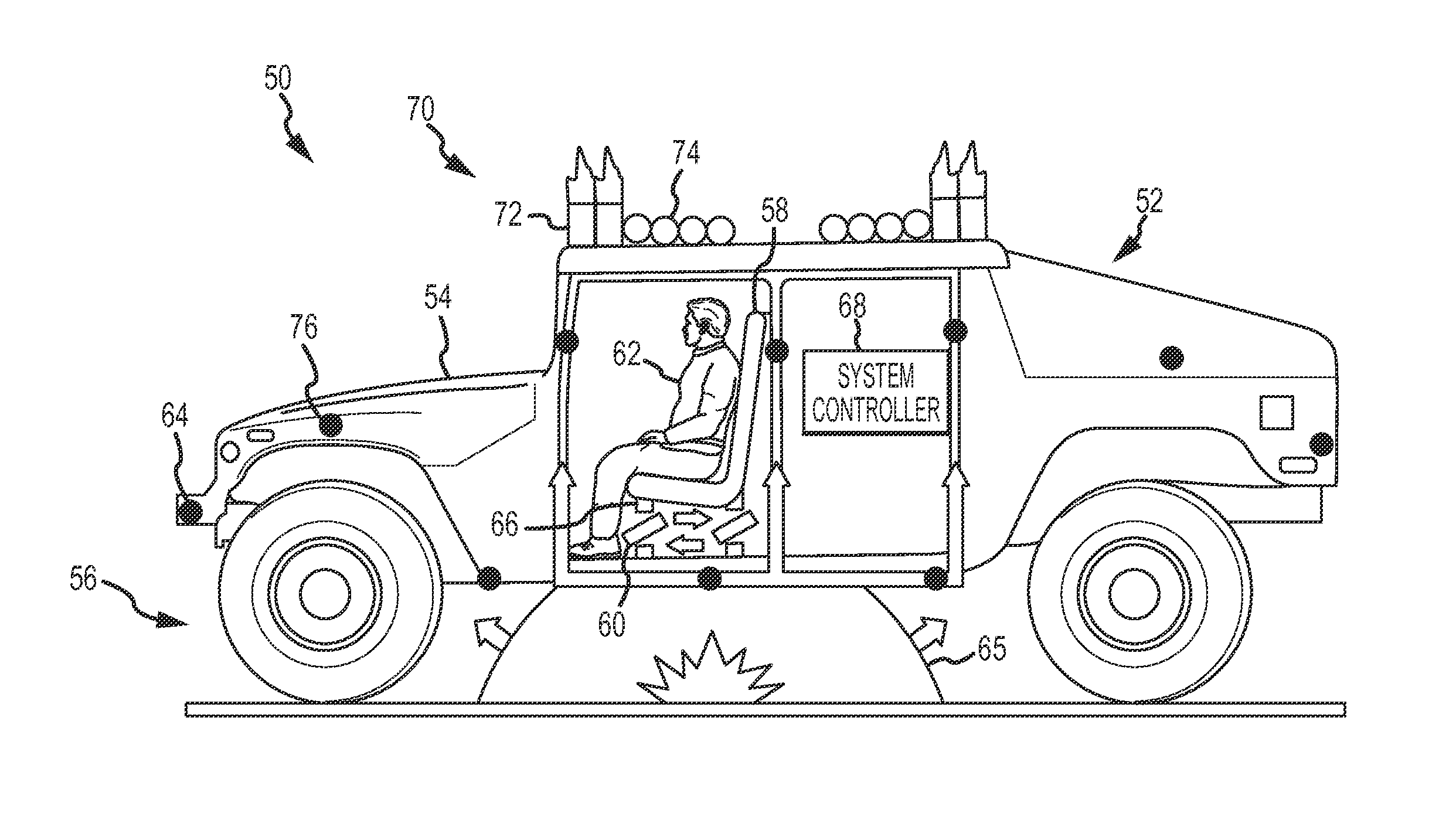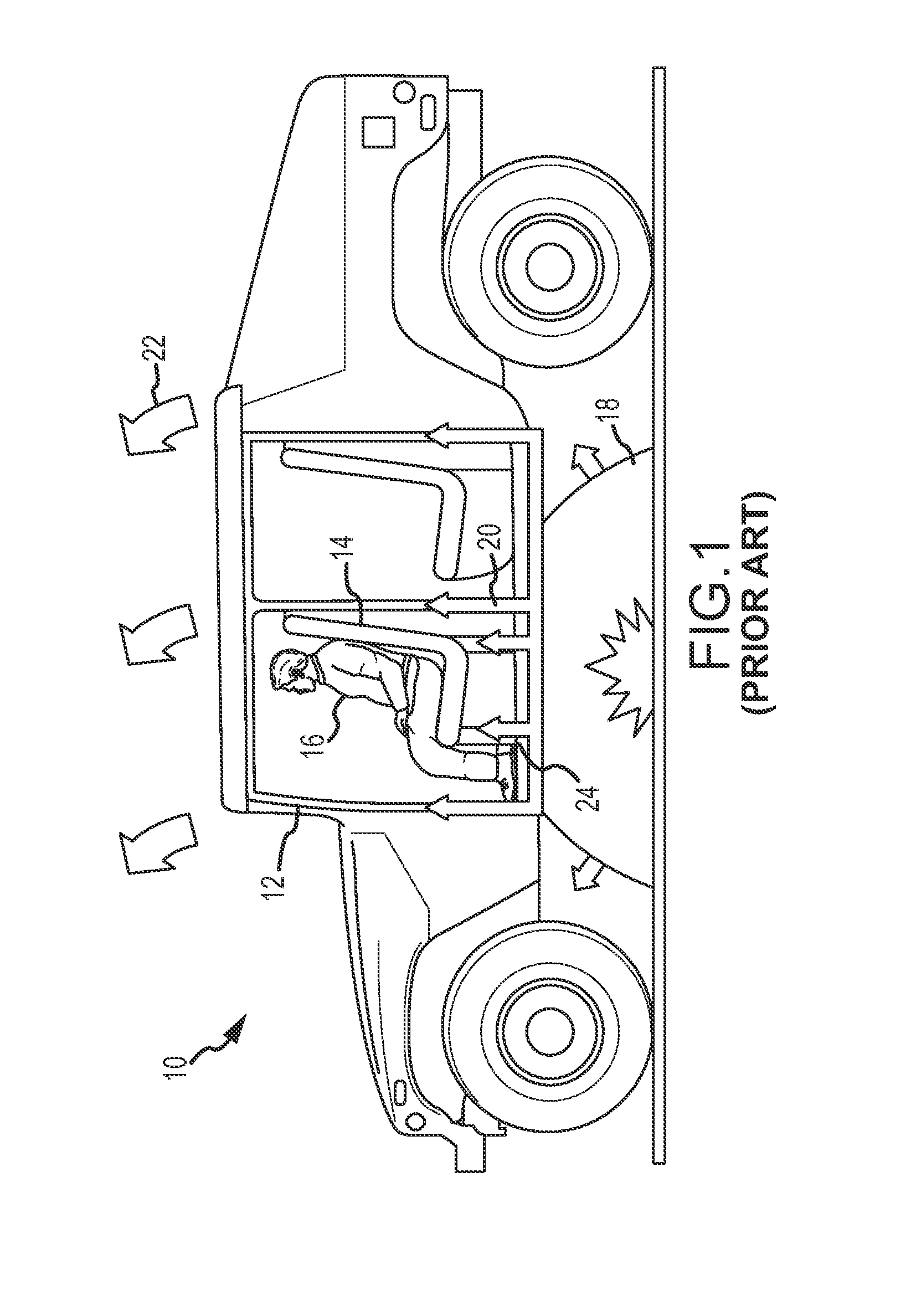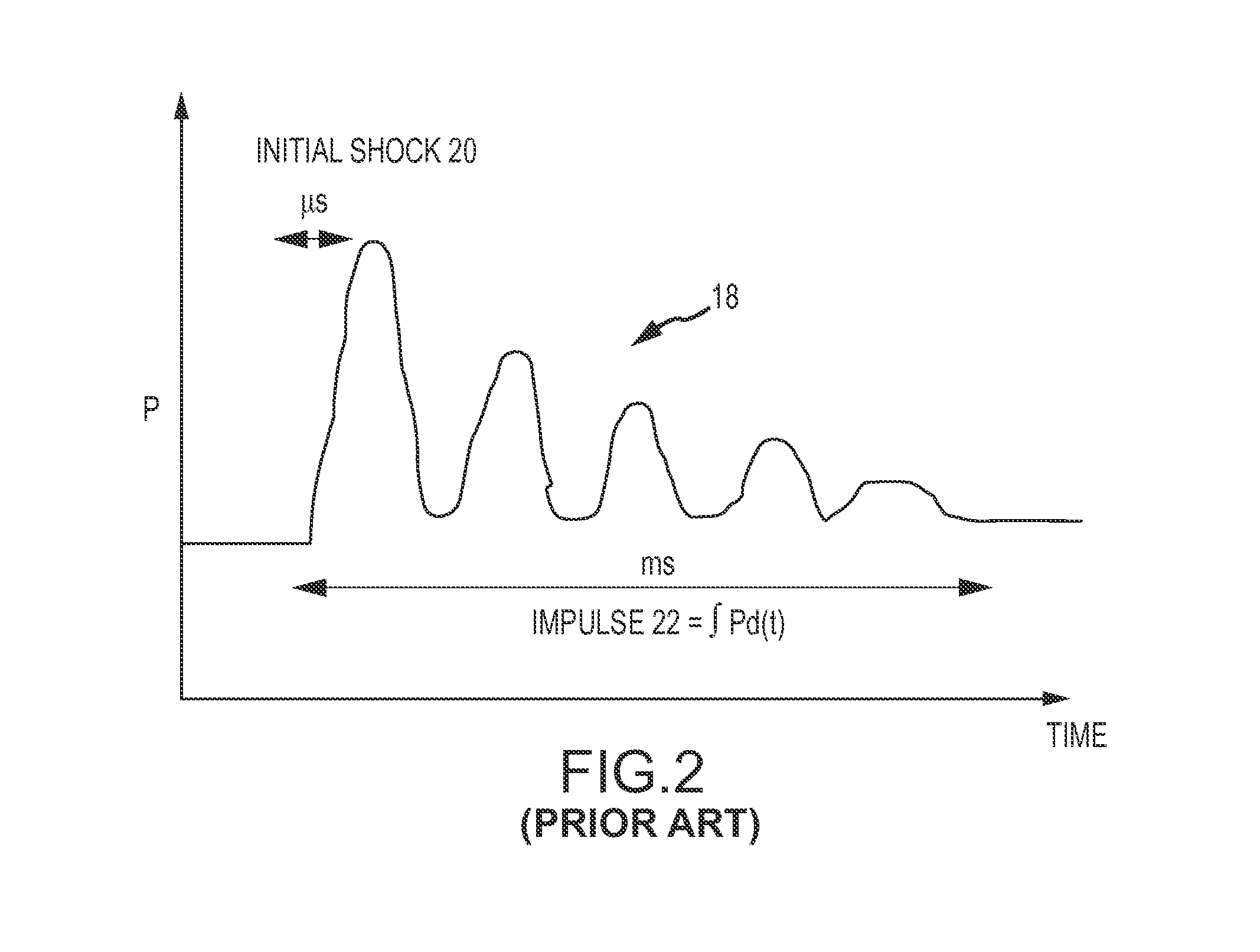Vehicle occupant blast isolation system
a technology for vehicle occupants and blast isolation systems, which is applied in the direction of pedestrian/occupant safety arrangements, using reradiation, instruments, etc., can solve the problems of high likelihood of serious injury for vehicle occupants, roadside bombs, rockets, etc., and achieves limited success
- Summary
- Abstract
- Description
- Claims
- Application Information
AI Technical Summary
Benefits of technology
Problems solved by technology
Method used
Image
Examples
Embodiment Construction
[0020]The present invention provides a vehicle occupant blast isolation system that uses small explosive charges and small rocket motors to isolate vehicle occupants from blast loads. The system initiates the explosive charges to remove all mechanical linkages between the occupants and the initial shock so that no shock effects are transferred. The system counteracts the effects of the impulse by igniting the rocket motors to provide a restoring force to counter the effects of the impulse load. This combination of mechanical isolation and impulse negation addresses both the high-frequency initial shock and low-frequency impulse effects from explosive devices.
[0021]Referring now to FIGS. 3a, 3b and 3c, an embodiment of a vehicle occupant blast isolation system 50 for a vehicle 52 uses small explosive charges and small rocket motors to isolate vehicle occupants from blast loads. Vehicle 52 comprises a body structure 54, wheels 56 (or tracks), an occupant seat 58 and a seat support str...
PUM
 Login to View More
Login to View More Abstract
Description
Claims
Application Information
 Login to View More
Login to View More - R&D
- Intellectual Property
- Life Sciences
- Materials
- Tech Scout
- Unparalleled Data Quality
- Higher Quality Content
- 60% Fewer Hallucinations
Browse by: Latest US Patents, China's latest patents, Technical Efficacy Thesaurus, Application Domain, Technology Topic, Popular Technical Reports.
© 2025 PatSnap. All rights reserved.Legal|Privacy policy|Modern Slavery Act Transparency Statement|Sitemap|About US| Contact US: help@patsnap.com



